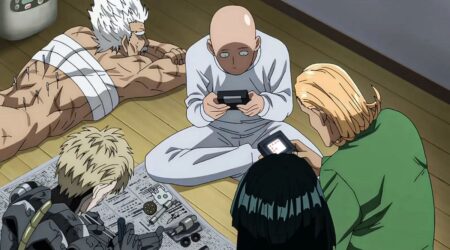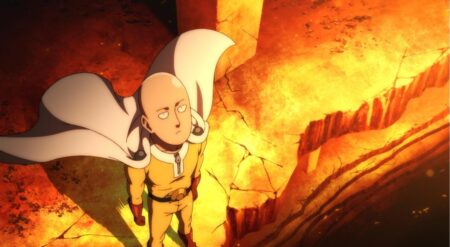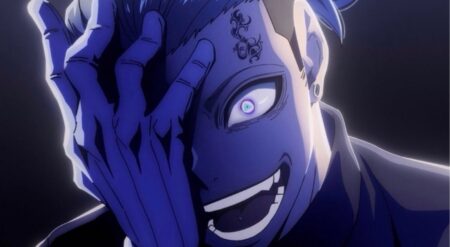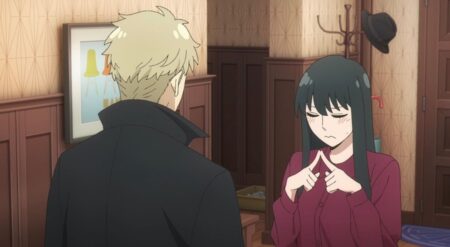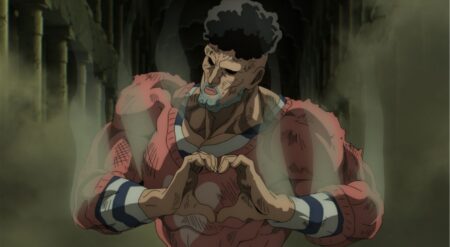Possessing an abundance of style and retro-aesthetics that instantly pull us into the world, Kowloon Generic Romance is a brilliant adaptation. Based on the manga series written and illustrated by Jun Mayuzuki and produced by the still relatively fresh studio Arvo Animation, the series establishes its off-kilter, yet enticing tone from the moment we hit go as we chase the pieces of the puzzle that make up this romantic mystery.
There is more to Reiko Kujirai (Haruka Shiraishi) than meets the eye. That’s true of all the rich characters in this series. But it’s Reiko’s journey that we most closely follow as she navigates a world in which she wears the face of her coworker, Hajime Kudo’s (Tomokazu Sugita), deceased lover. A fact that muddles the waters, considering Reiko’s crush on Kudo.
The two live in the Kowloon Walled City while working for a realty company. While there, their relationship, pleasant and easy, deepens. However, as Reiko begins to learn the truth of her past self, the world around them begins to shift. Like the protagonist, there’s more to Kowloon too, beyond its simple pleasures and everlasting summer days. How these mysteries intersect and how they come to unravel gives the series its greatest potency, along with the expanding ensemble, which grants the world even more profound lore and more confounding twists and turns.
The ensemble is the heart of Kowloon Generic Romance.

While the would-be romance between Reiko and Kudo is the immediate pull of the series, it’s the other relationships Reiko makes and the ones surrounding her that give the story its stakes and emotional pull. Yaomay (Aoi Koga), Reiko’s first real friend, injects fresh, vibrant life into the story as she whisks Reiko away on a journey to find her most authentic self. It’s through Yaomay that Reiko can separate herself from who she was and how that ties to Kudo, investing in her joys and interests from lemon chicken to mystery novels.
Yaomay isn’t just here to push Reiko’s story forward or to act as mere support. Her character possesses real depth and drive as she, too, must contend with a past that lingers. A past that haunts her own desire to be her truest self, unburdened by the weight of her mother’s disapproval. And it’s not just Reiko who she helps, with a later in the season dynamic between her and the mysterious young man Xiaohei (Soma Saito) adding surprising layers of emotional weight.
Even characters who, at first, seem antagonistic are given a great deal of time to develop, becoming increasingly sympathetic and understandable in the process. How Miyuki Hebinuma (Ryōtarō Okiayu) and Tao Gwen’s (Taito Ban) romance develops, told in flashbacks and present day, offers a surprisingly sweet outlook on a character whose first impressions were severe. How Miyuki softens throughout the series, from divulging to Gwen that he’s intersex, and opening himself up to vulnerability, to Gwen’s desperate search for him in the final episode, is fantastic character work.
Each character gets their moment to shine as the mystery unfolds.

Although some revelations about his character and involvement with Hebinuma Pharmaceutical arrive a bit late and abruptly, they never lose our investment. Each pivotal character in Kowloon Generic Romance maintains significant intrigue as their lives begin to warp and unravel due to the mysteries tying them all together and, most importantly, tied to Kowloon.
It’s why Kudo is such a fascinating character because in any other series, he’d be the de facto main support, if not lead. Instead, he often takes the backseat in the narrative despite how integral he is to it and the central mystery. A world built around his grief and sense of regret as he mourns his fiancée, Kujirai B (Yuriko Yamaguchi), Kudo is less the driver of the plot and more so the platform for it. And yet, his mourning deepens his character, the sadness that follows him evident despite his carefree, breezy demeanor in the first few episodes.
Even throwaway jabs, such as Kudo picking apart Reiko’s crow’s feet, are given greater depth in hindsight. Sure, it could just be a means to tease his new office crush. But isn’t it more devastating to think that he’s commenting on them because it visually marks the passage of time on a person who shares the face of a woman he loved, who no longer will age?
A fun and patient mystery anchors this fantastic adaptation.

Everything about Kowloon Generic Romance is superb, and its writing is one of its greatest strengths. So many series get lost in their lore and desire to craft the most mind-numbing, frustrating mysteries, where their real hope seems to be to pull a fast one on the audience. In comparison, the storyline in Kowloon is less about faking us out and more about leaving just enough bread crumbs to help us come to our conclusions about what the city is, who operates it, and why people are drawn to it.
It’s less about trying to decipher the clues and more about letting them wash over you. And it makes the mystery that much more enjoyable to experience. By the time it all unfolds, it’s genuinely effective because the writing has taken its time to make us care about these characters and their world, and, most importantly, their shared hopes of having the courage to find and be their most authentic selves.
It’s perhaps a plus of centering a story on adults, something of a rarity in the medium, though not unheard of. The fact that the majority of their characters are in their late twenties and early thirties is genuinely refreshing, especially in how it allows the show to approach sexuality and our abilities to discover ourselves outside of adolescence. Beyond the science-fiction elements and the mystery at its core, the most impactful part of the story is the commitment to the idea that our coming-of-age stories never truly stop. Instead, we’re all afforded the capacity to change and grow at whatever stage we’re at in life.
Kowloon Generic Romance understands the potency of nostalgia.

Directed by Yoshiaki Iwasaki, the genius magic trick of Kowloon Generic Romance is found in its inherent design. What appeals to the characters appeals to the viewers too – the nostalgia. The series embraces a ’90s style aesthetic with busy urban backgrounds and distinctive colors and muted grayish palettes that ground the narrative into its timeless yet out-of-time sense of place. There’s a roughness to the backdrops that is severely lacking in modern anime.
That nostalgia is found even in the character designs, Reiko and Kudo in particular. Everything from their faces to their silhouettes is infused with a certain type of retro influence. Even their office attire stems from a more ’90s style. All of this grants the series a magnetic pull. Because while there’s plenty of spectacular modern anime (very notable this season in particular), there’s not much that manages to evoke the specificities of ’90s animation quite like Kowloon has managed to. It’s not all perfect, but the effect is striking, making us yearn for the grit and tactility of series and films of that era.
An emotionally stirring depiction of our desire to hold on to the past while seeking absolution and total agency, Kowloon Generic Romance is a stunner. An enriching world populated by engaging and mystifying characters, the series unfolds with a patient clip that understands that the best part of a mystery is the unraveling of its pieces, allowing viewers the time to build their conclusions before an explosive, cathartic reveal.
Kowloon Generic Romance is available now on Crunchyroll.
Kowloon Generic Romance
-
Rating - 9/109/10
TL;DR
An emotionally stirring depiction of our desire to hold on to the past while seeking absolution and total agency, Kowloon Generic Romance is a stunner.



